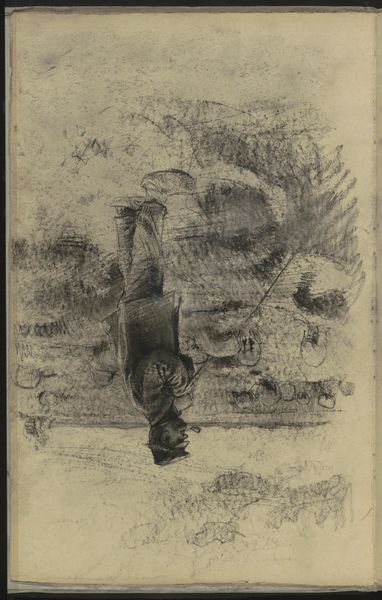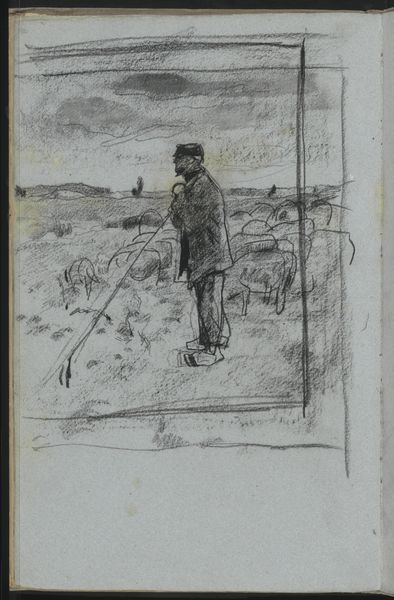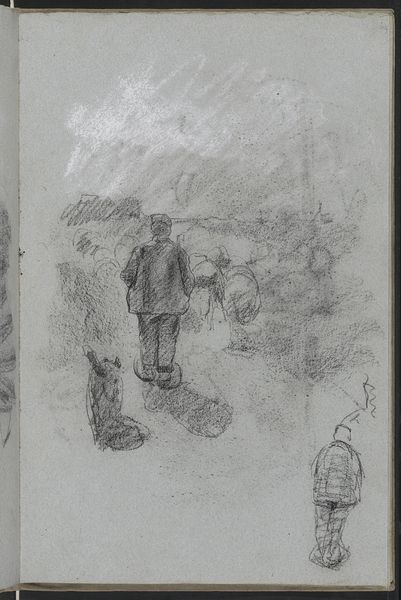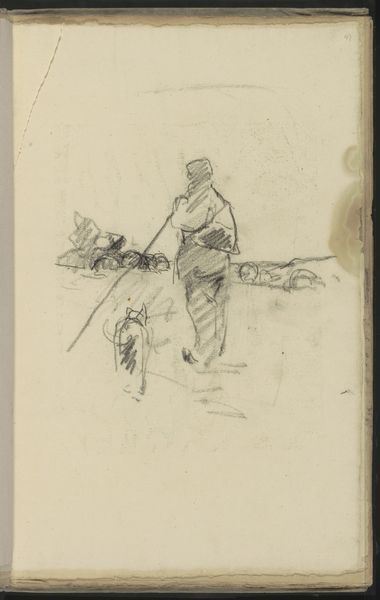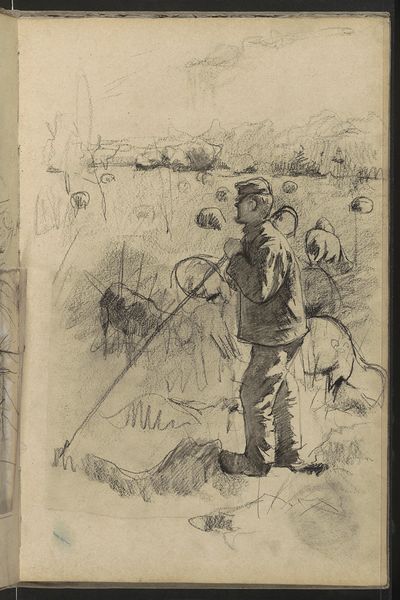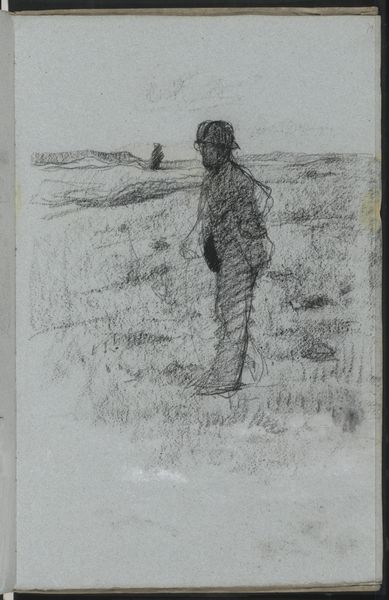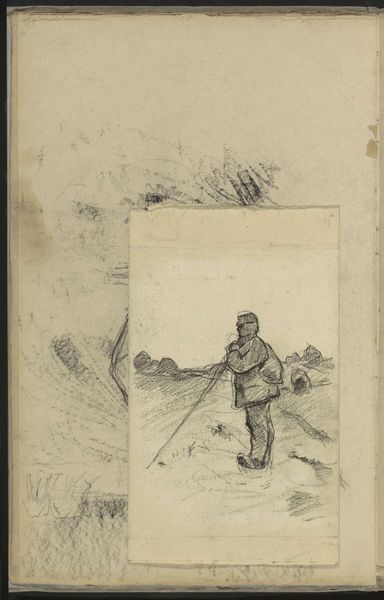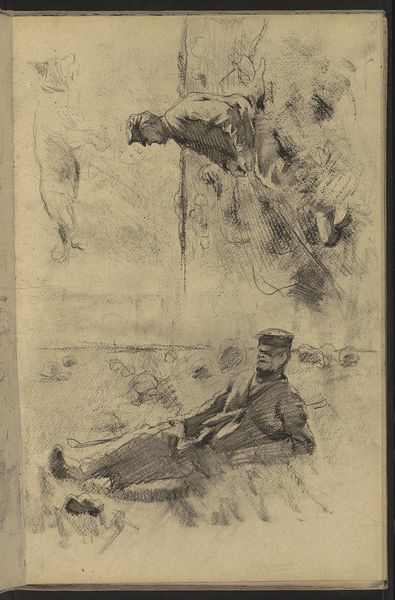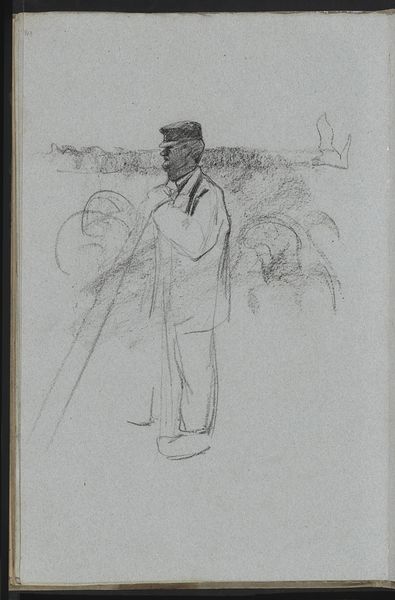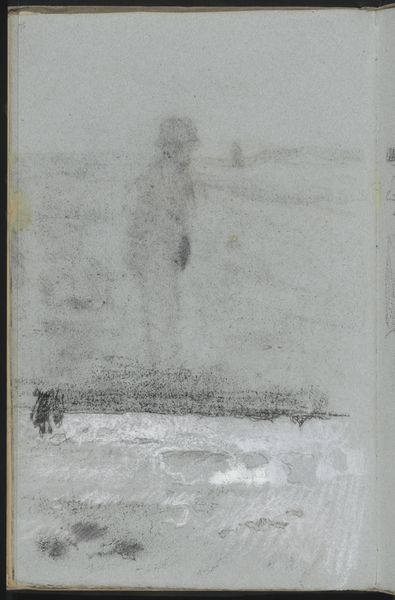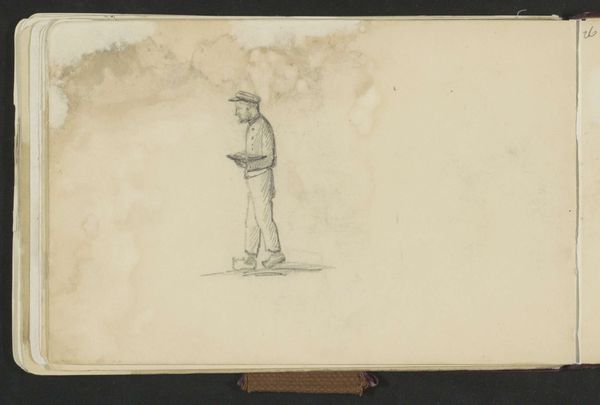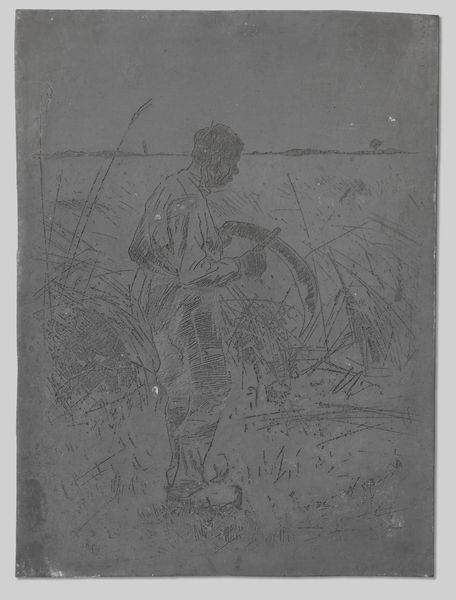
drawing, graphite
#
drawing
#
dutch-golden-age
#
pencil sketch
#
landscape
#
graphite
#
realism
Copyright: Rijks Museum: Open Domain
Curator: I find myself drawn to this piece - it's called "Schaapherder voor zijn kudde," or "Shepherd before his flock," and it was created between 1884 and 1887 by Willem Witsen. It's a drawing, a graphite pencil sketch housed at the Rijksmuseum. It feels very grounded. Editor: My immediate reaction is...melancholy. It's stark, almost lonely, with this figure set against a bleh landscape. The soft medium seems to create an overall sense of somberness. Curator: Somber is a great word for it. Witsen’s subtle realism is a powerful testament of the late 19th-century Dutch countryside. What's so striking is the use of shadow; there is the suggestion of a horizon, with the figures emerging subtly. The staff seems almost like a part of the shepherd’s own spine – adding weight to his presence. Editor: The staff is interesting, especially as a classic symbol of authority and care. However, the muted execution complicates a clear message of pastoral protection. Do you find any symbolism with the flock, other than an occupation? Curator: The flock, represented by those indistinct rounded masses, they could represent burdens but there's a certain harmony in their clustering around the shepherd that suggests community, reliance. You see the landscape becoming the stage of this story as it emphasizes their combined, subtle defiance of emptiness. Editor: Empty space indeed... I would assume that the soft edges serve a purpose for more accessibility to interpretation, but instead, it only seems to alienate this scene. He must be having an intense staring competition with his herd of fluffy, blank nothings. Perhaps Witsen intended us to find humanity here by the shared nothingness they endure. Curator: It's that shared endurance that speaks to me! There’s so much honesty to it all. I am interested if it makes you, as the beholder, consider your own solitude, connection. What you expect out of those moments and who fills the voids for you. The graphite is a humble choice but there is nothing empty about Witsen’s hand. Editor: Right, it prompts such questions – an icon of reflective solitude. It certainly feels intentional; from formlessness and isolation, we build something tangible and perhaps comforting from just a simple graphite smear and soft lines. Curator: It is truly haunting, isn't it? To capture so much depth and feeling with seemingly minimal details is remarkable. I wonder what those sheep are thinking... Editor: Probably that they’re happy to not have such a big staff weighing them down.
Comments
No comments
Be the first to comment and join the conversation on the ultimate creative platform.
